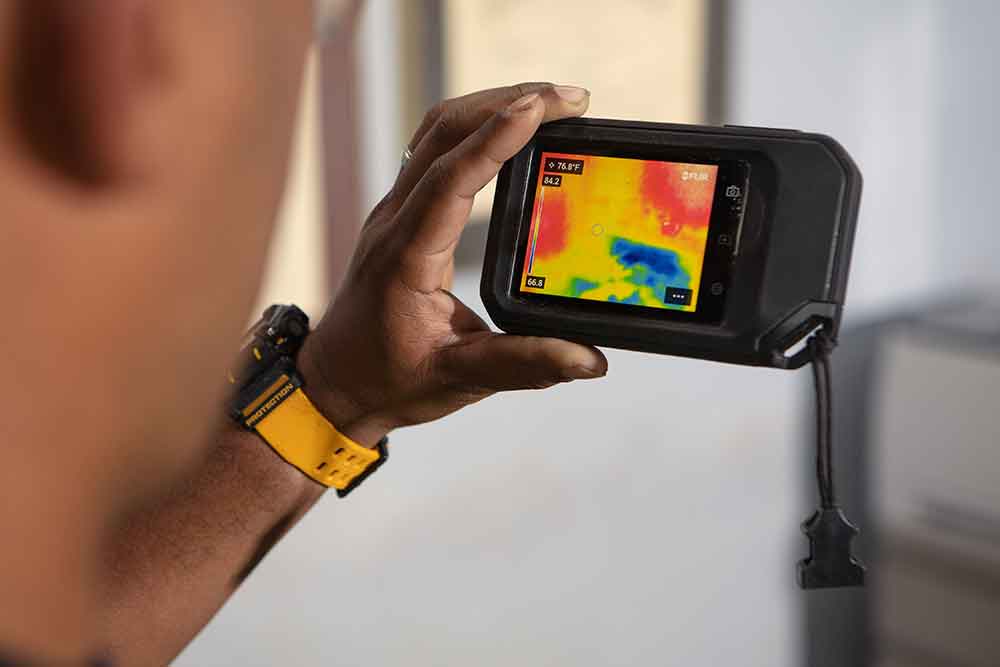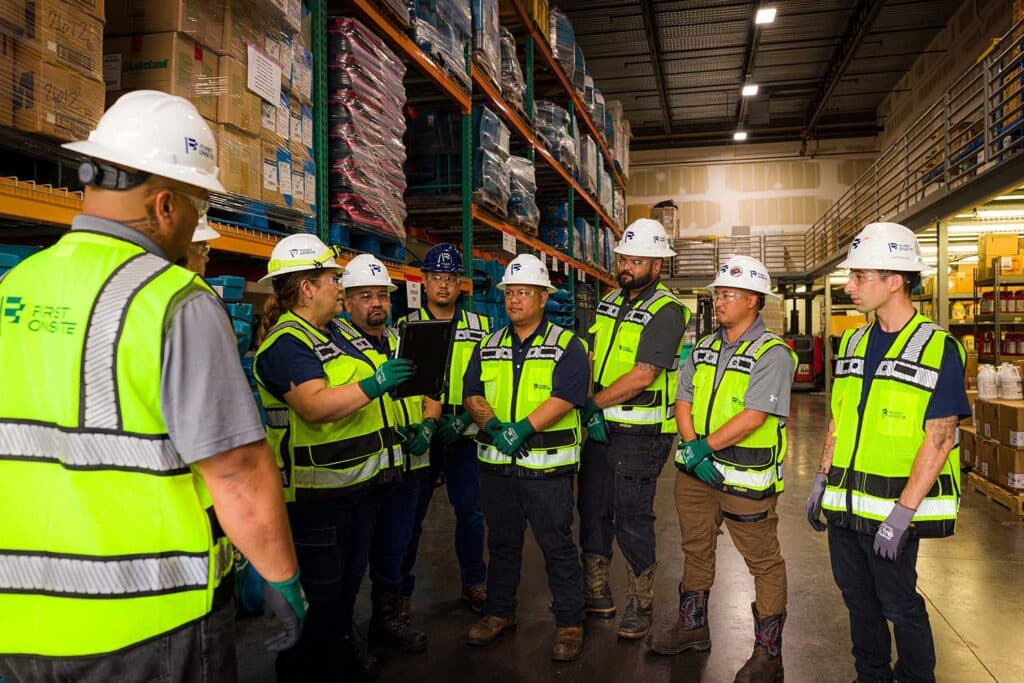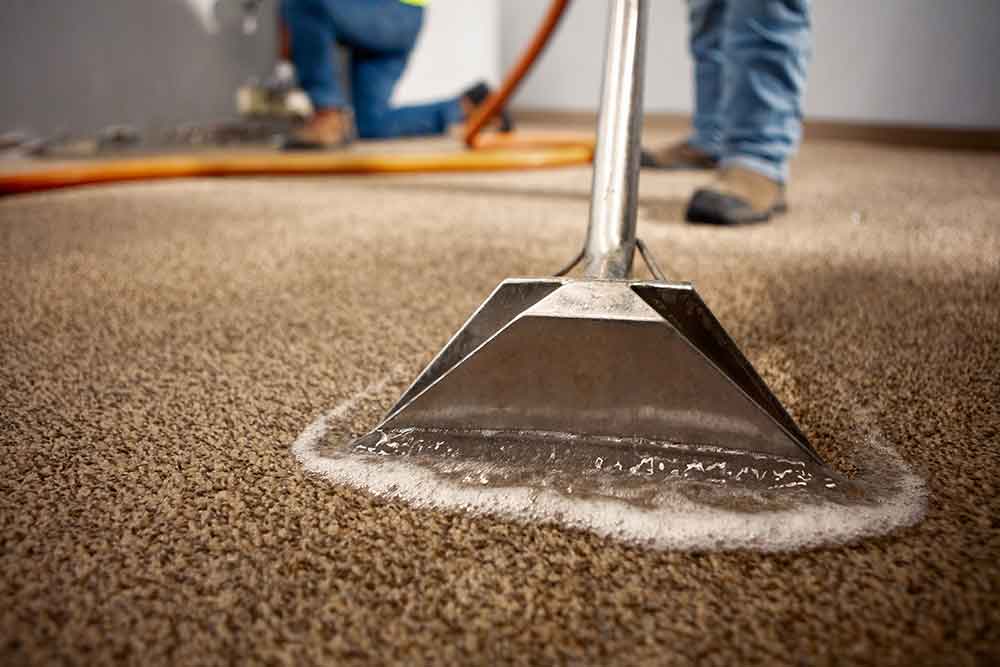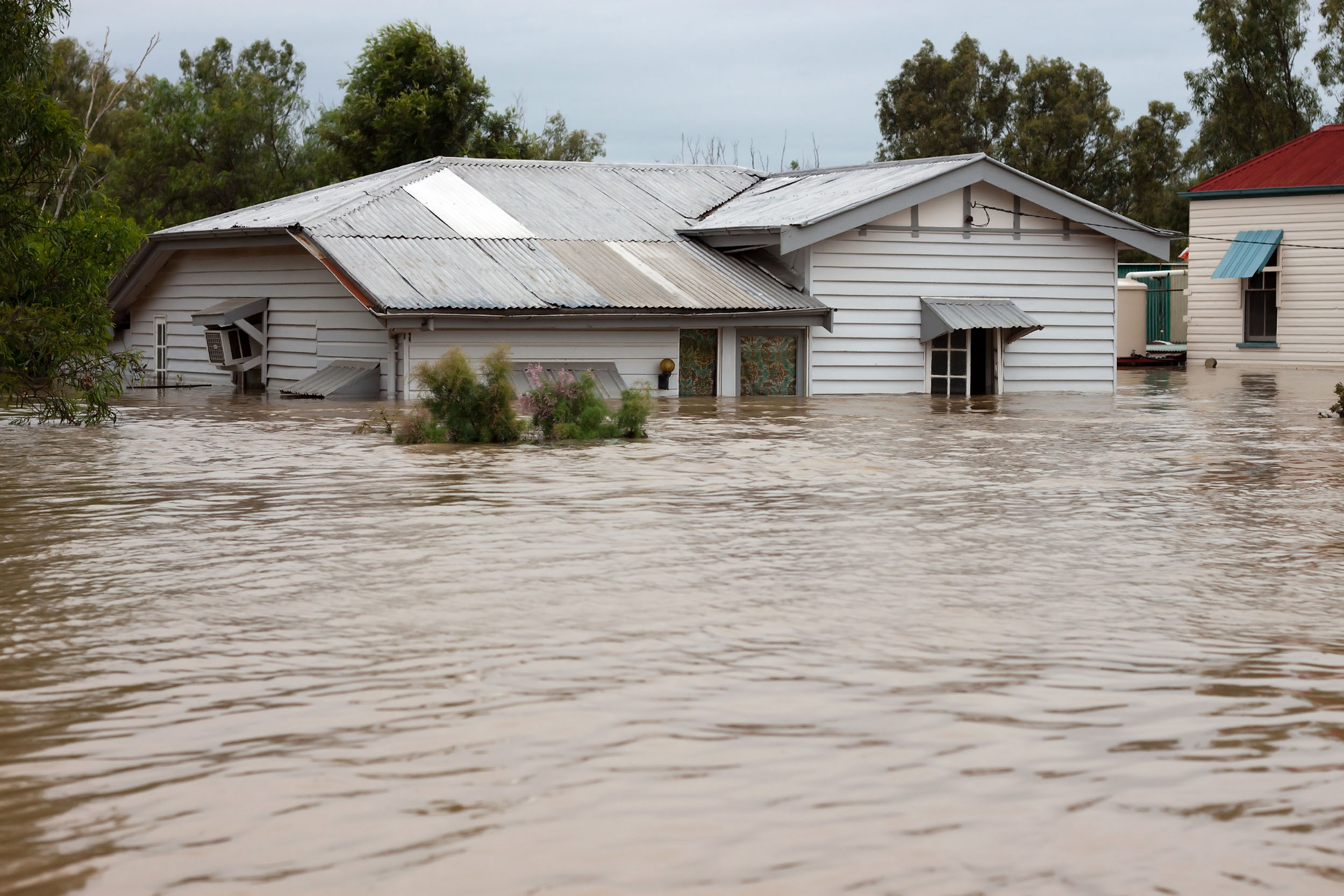As we shift from fall to winter, regions across the country are preparing for the weather events that come with it. While the West Coast may not experience heavy snowfall or freezing temperatures, property owners and managers should not underestimate the impact of heavy rainfall. Factors like storm surge, urban development, and the dryness of the landscape all increase the risk of a flooding event in coastal and surrounding areas in the western states.
All types of rainfall can impact poorly maintained properties, but heavier and more severe storms can increase the level of risk for even well-maintained properties. That’s why we recommend that building owners, managers, and operations teams focus on preparing for heavy rain this winter. A comprehensive pre-loss plan accounts for all water-related events and their potential impact on every inch of your property. Having this information before an event will affect how well you and your restoration partner react to water damage, and a faster, more efficient reaction means less business downtime and a quicker overall recovery.
West Coast Heavy Rain and Seasonal Flooding
The West Coast’s unique weather and landscape play a significant role in how properties are impacted by Winter’s heavy rain and any flooding resulting from it. In the winter, the West Coast often gets more rain and sometimes floods. This is due to changes in the ocean and air, but what’s important to know is how this can affect homes and buildings. Heavy rains can happen, especially in places where wildfires have occurred or where cities aren’t built to handle lots of water. It’s key for homeowners and businesses to be ready for these rainy times to protect their properties from water damage.
Identifying At-Risk Areas

It’s important to remember that if your area experiences rainfall, your property does take on the risk of water damage. That’s why we stress continued maintenance for our clients. The less you know about your property, the less you can maintain, and if you don’t support your property, there’s a strong chance that water damage will strike unexpectedly, creating a long period of unwanted downtime. Preparation is critical for a property damage recovery that reduces overall interruption and downtime.
If you are specifically concerned about flooding, you can learn more about how likely it would be for a flood to occur in your area by referring to a flood map and your area’s flood history. Flood maps will show your community’s risk of flooding by looking closely at flood zones, floodplain boundaries, and base flood elevation. This resource is beneficial to property owners, insurance agents, and lenders. If you are interested in seeing the flood map in your area, you can do so by visiting FEMA’s service center here: https://msc.fema.gov/portal/home
Flood Preparedness Measures
Water damage can be particularly troublesome due to how quickly it moves from seen to unseen areas, causing more significant issues like mold and mildew. Thankfully, there is plenty you can do to prepare for heavy rain and any potential flooding that results from it. Here are a few tips sourced from FEMA.gov.
- Have Insurance – Ensuring you’re covered from any water damage on your property due to a flood or heavy rain will save you from sticker shock when restoration is needed.
- Assess the risk of flooding with flood maps – Remember that this resource will give you an understanding of what you can expect your area to encounter. Knowing this will help you hone in on the right plan of defense.
- Check on gutters and drainage systems – If your gutters aren’t properly installed or have debris buildup, it’s time to address those issues. Give water a place to move that is away from your property.
- Improve lot grading – Water should be moving away from the property and not toward it. Ensure you’re leveling off any areas where water moves in the wrong direction. Consider all options for moving water away from your facility.
- Raise Utility Equipment by 1 Foot – If you have outdoor utility equipment, like air condensers and heat pumps, consider raising them up 1 foot so that flood waters are less likely to make them malfunction or need replacing.
- Protect your contents and valuable possessions – Water damage can quickly destroy your important documents, furniture, data, and items with sentimental value. Make sure they are in a safe location and elevated from potential flood waters.
- Seal your foundation – It is common for properties to experience cracks in their foundation over time. This is a common place for water to work its way into a property and cause damage you don’t readily expect. Sealing cracks in the foundation will save you from trouble down the line.
- Consider installing flood vents: having a place for water to move freely through your facility can keep it from building up in and around your property. Flood vents tend to be in areas like the garage or crawlspace. Depending on the severity of heavy rain or flooding in your area, this may or may not be a good decision for you.
- Maintain or Install a Sump Pump – Check your sump pumps if you have them, and install them if you don’t. Sump pumps are a great way to move water away from your property and will be a great defense against basement seepage and plumbing issues.
While it’s essential to have property protection in place, it is paramount to have a plan that protects people in times of crisis. This means preparing emergency supplies and an evacuation plan.
- Know your needs – Ensure you have enough emergency supplies to support everyone you are accountable for.
- Identify and establish an alternative place to take shelter if your facility becomes unsafe – This means being aware of locations safe from water and flood damage before an event occurs.
- Build an evacuation team – equip these people with the necessary knowledge to support a plan that gets everyone to safety.
- Plan alternative routes in case your chosen one is obstructed.
- Teach and practice your evacuation route with all occupants.
- Have non-perishable food and water on-site in case of a power outage.
- Have batteries for flashlights, radios, and other handheld electronic devices.
Post-Flood Recovery Steps
The time immediately after a water or flood event can be challenging. You’ll want to assess the level of damage your property has sustained, but this is an unsafe time to move around your property. Electrical current can move through sitting water if contact is made, debris collected on the floor may be sharp and hazardous, and all this time, water is still causing damage to your property. At this point, you should call a professional restoration team to help you safely mitigate any continued issues. Here are some steps to mitigate loss if you can do them safely. However, we recommend letting us handle them.
- Identify gas and water shutoff valves and cut off gas and water.
- Locate the power box and turn off the power to eliminate the threat of electrocution.
- Check for structural damage so no one gets trapped in unsafe areas.
- Take as many photos of the water damage as you can. You will need to provide these to your insurance provider to determine the extent of what is covered.
- Round up your contents, electronics, valuable furniture, and artwork. Include anything with sentimental value as well. Contents restoration teams can restore damaged items under the right circumstances.
- If conditions are humid, identify all mold and mildew that you can. Mold can form within 24 hours; if not identified, it can spread and threaten health and safety.
In the event of property damage, it’s important to act quickly for an effective recovery. Document the damage with photos or videos and assess your restoration needs. While you can choose a restoration service that meets your requirements, it’s important to independently manage your insurance process. Prompt action helps in moving forward toward restoring your property effectively.
First Onsite’s Role in Heavy Rain and Flood Preparedness Recovery

By now, you understand how extensive water damage can be and how easily it can cause long-term problems for you. As a restoration company, First Onsite works to make this process easy for our clients. That is why we put such a large emphasis on preparing for an event before it happens.
When you’re ready, just reach out to the First Onsite team. We’ll come to your site, assess your property, and help you build an emergency response plan that gets your property back to a pre-loss state quickly and efficiently. Here are some of the ways we make things easier for you.
- We identify areas where risk is high – A thorough look at your property will determine areas where we think you may experience damage during a water or flood event. This could be anything from debris in your gutters to cracks in your foundation. We will highlight all of them and recommend to your team how to safeguard from water damage in these areas.
- We identify and mark areas of importance to support fast mitigation. This includes water and gas shut-off valves and circuit boards to cut electricity if needed.
- We build a catalog of important contents – When you walk us through your facility, we will make note of documents, furniture, electronics, and artwork that are important to you. We prioritize these items during disaster recovery and work to restore them with our content restoration service.
- We establish important staging locations ahead of time, like where we’ll set up our equipment during an event. The sooner we know where we’ll be, the faster we can get to work.
- For commercial properties, we work with your facilities teams so they can begin the mitigation process before we arrive on site. Our collective response adds to your fast and efficient recovery.
Once we have established a strong pre-plan, First Onsite will be ready to respond to your property damage crisis with a knowledge of where to go, how to maneuver, and who to talk to.
Responding to Water Damage

First Onsite’s water damage response is made faster by your preparedness plan listed above, but if you haven’t gone through this process with us, we can still assist you with your water damage crisis. Here’s how it works.
- Contact First Onsite – When you call our Contact Center, our dispatchers will ask you all relevant questions about your water damage incident before dispatching you to your local office. Once your local office receives the information and connects with you, this kick starts a rapid response.
- Mitigation – We contain the sources of water damage and turn off emergency shutoff valves to stop the spread of damage and ensure the site is safe for us to operate in.
- Water Extraction – We use a variety of tools to extract sitting water from your facility.
- Moisture Mapping – Water quickly soaks into porous materials and creates problems unseen to the naked eye. Our moisture detection tools determine where there’s hidden water damage within your facility.
- Dehumidification and Drying – Air movers and special dehumidifiers are placed in the areas affected by water to begin the drying process.
- Disinfecting – EPA-registered disinfectants are applied to problem areas to protect the health and safety of the building’s occupants from mold growth.
- Controlled Removal of Damaged Materials – Materials within your structure that have been impacted by water, like drywall and wood, are removed from the site.
- Restoration – We restore the affected area to a pre-loss condition by replacing your damaged materials and getting your facility back to its pre-loss state.
While the process for those who have pre-planned is the same for those who have not, we assure you that connecting with us ahead of time will shorten the overall time span of the steps laid out above. Knowing your local team before crisis, informing them of where shutoff valves are, and understanding your most important contents give First Onsite the upper hand when dealing with water damage that will continue creating problems if not addressed.
Long-Term Mitigation Strategies for Properties
There’s no better way to deal with water damage than to get ahead of it. Here are some long-term thought starters for improving your readiness long before you need it.
- Elevate The Structure – Properties above the flood line are less likely to experience water ingress during flooding.
- Property Grading – This was listed as a preparedness measure above but deserves repeating. Assess and manage exterior grading. Ensure that water is moving away from your property so you aren’t dealing with puddling and ingress during heavy rain or flooding.
- Install Gardens and Greenery – water tends to soak up rainwater, helping to mitigate excess water within your facility. It also adds a little exterior beauty to your building in the process!
- Install Permeable Materials Outside of your Facility – Let rainwater and floodwater soak into these materials so that you lessen how much of that water is making its way into your property.
- Stay Aware Of Flood Mapping and your Area Flood History – The more you know about how your area handles water, the better you will prepare for it.
- Build a Long-Term Relationship with First Onsite – A long-term partnership with us makes these responsibilities seem less all-consuming. What you’re reading will help you deal with water damage. First Onsite’s partnership will help you deal with unexpected property damage events of all kinds. After all, we are a full-service solution to property damage.
Community Engagement
One overlooked step is community engagement. Why should you need to think beyond your property? Well-informed neighbors are better suited to remain knowledgeable, and together, collective efforts can be taken within the community to reduce flood risk.
Remain Disaster Ready With First Onsite
As the West Coast continues to navigate its version of winter, it’s important to remember that property damage can occur during this time. That’s why if you only take one thing away from what you’ve read above, it should be that planning ahead is crucial for a swift and efficient recovery. For commercial properties, downtime can mean a slowing income, and for residents, it can result in displacement or being stranded without power for days. We’re here to tell you that doesn’t need to happen.
Remember these key steps as you start on your preparedness journey.
- Learn about your property.
- Make changes that make your property less susceptible to water damage.
- Consider connecting with us to build a pre-loss plan that mitigates damage before it occurs.
- Have our number ready for when a water damage event occurs.
For more information on heavy rain and flooding in West Coast states during the winter season, connect with a First Onsite account manager today.
